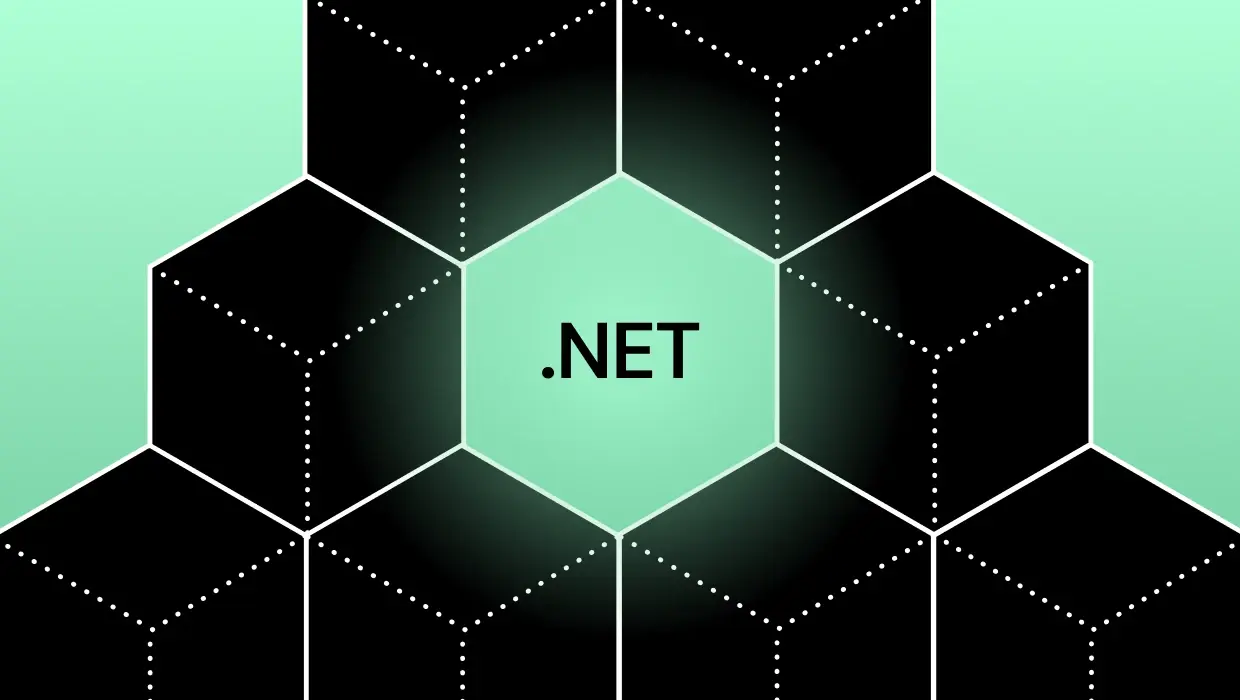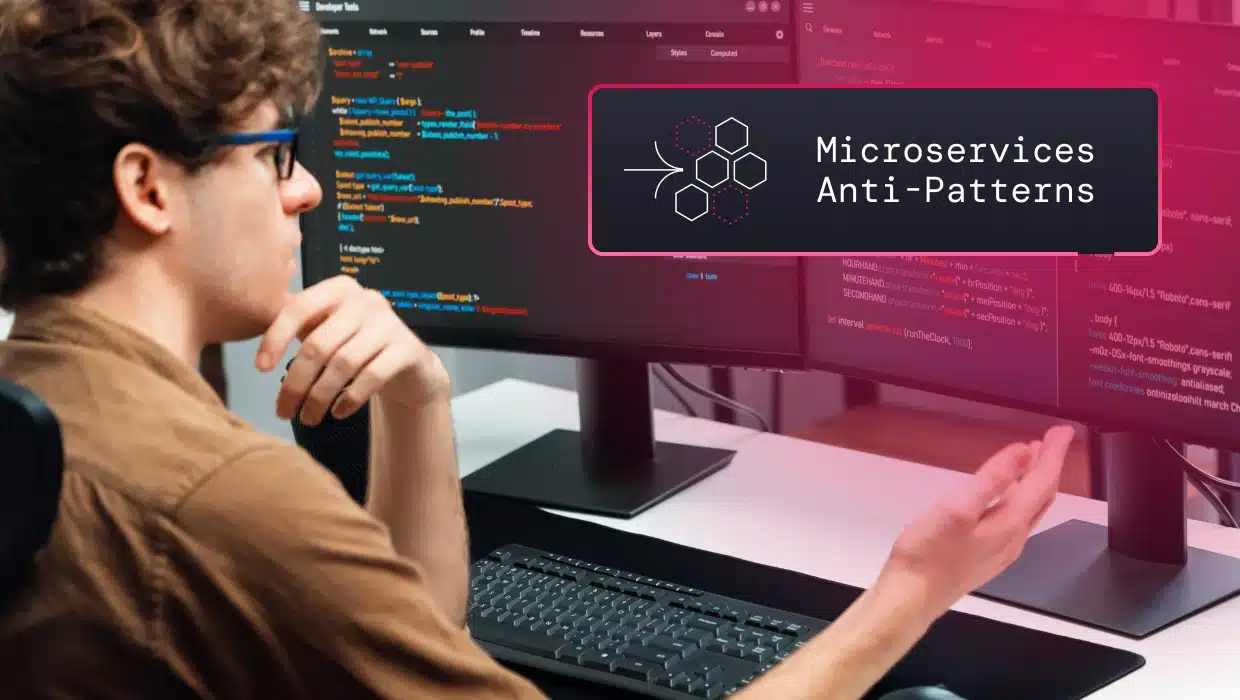Monolithic and Microservices are the two architectures used most commonly today for developing enterprise software applications. Monoliths have been around for some time, but the benefits of a microservices architecture are making the latter more popular. Because of this, many companies are investing in transforming their monoliths into microservices.
Monolithic is an accepted way to start application development because it is straightforward and well-understood. A monolithic architecture is simple. It is built as one unit that includes all required components. It comprises a UI, a business logic layer, and a data layer that talks to the database. The initial development happens at a fast pace.
But problems appear as the codebase grows in size and complexity (namely, interdependencies).. It becomes increasingly difficult to add new features. Developers must spend more time figuring out where to make changes. They no longer understand the entire code base. So, changing code in one place results in breakages elsewhere. To avoid this, the developers must thoroughly test even the smallest changes. This adds to the release cycle time. So what are the benefits of a microservices architecture, in contrast?
Microservices are small services that adhere to the Single Responsibility Principle (SRP). Every microservice focuses only on one functionality. The boundaries between services are very clear. As a result, there is loose coupling between microservices. You can build, deploy, and scale them independently. As each service is small, you can make updates comparatively easily and quickly compared to monoliths.
What Are the Benefits of a Microservices Architecture?
In addition to the service size and resulting flexibility, there are many more benefits of a Microservices architecture. Some of these include:
Development Agility
Each service is independent. So, feature updates and bug fixes are simple. You can release a service by itself instead of releasing the full application. The development process is very agile and reduces the time to market.
Focused and Effective Teams
Because services are small, a small team can independently manage a service from end to end. A small crew is more productive because communication is faster, there is less management overhead, and agility increases.
An Independent Codebase
A microservice has an independent (loosely-coupled) codebase and a separate data store. There are no dependencies on other teams. The team can easily add new features. Each service starts much faster than a monolith, so developers are more productive.
Flexible Technology Choices
Every microservice team can develop its code using the programming languages, databases, and tools that are most appropriate. They are also free to rewrite them using different languages and frameworks. Productivity increases, as does programmer satisfaction.
Failure Isolation
Microservices are isolated and autonomous. Hence, if one fails, others can continue working as usual. There is better fault isolation so that the entire system does not grind to a halt.
Scalability
You can scale particular services that you need and not the whole application–i.e. scaling an Ordering service during peak demand without having to scale up the Wishlist service. Each service can be deployed on the hardware best suited for it. This is cost-effective.
Database Schema Updates
A microservice should control its own data. It does not share it with other services. So, it can change its database schema if needed, without the fear of affecting other parts of the application.
Automation and CI/CD
The very nature of microservices lends itself to automation tools that enable a CI/CD (Continuous Integration / Continuous Deployment) pipeline. The tedious and laborious activities integral to the monolithic world, such as code integration, building, deploying, and testing, are automated.
When asking what are the benefits of a microservices architecture, these are the key benefits to understand. That said, they don’t come for free. The following section describes some risks and challenges you must consider before starting a Microservices or App Modernization project.
Related: How to conduct an Application Assessment for Cloud Migration
How Do You Judge Risk In A Modernization Project?
Every app modernization project is different and must be evaluated separately. To assess the risks involved in modernizing, Gartner has recommended a 3-step process, summarized here:
Step 1: Evaluate the legacy system using six factors:
- Business Fit: is it meeting business requirements?
- Business Value: is it providing sufficient business value?
- Agility: can the system deliver new features at the pace that the business requires?
- Cost: is the TCO (total cost of ownership) too high?
- Complexity: has the system become too complex for developers to be efficient?
- Risk: can the application be secured and scaled?
Step 2: Evaluate the most suitable option for modernization. There are seven options, ranked here from the easiest to the hardest:
- Encapsulate: Encapsulate the feature’s data and functions and release as a microservice
- Rehost: Re-host to another environment (e.g. AWS, Google Cloud, Azure) with no change in functionality (aka “lift and shift”)
- Re-platform: migrate to a new platform with the minimum amount of changes
- Refactor: improve the existing code to reduce technical debt
- Re-Architect: change the code into a new architectural pattern and exploit modern capabilities
- Rebuild: rewrite the entire application but keep its scope intact
- Replace: replace the application entirely and add new functionality in the process
The easier the option, the less the risk involved. The most complex options involve the most risk and deliver the most long-term benefits.
Step 3: Select the specific modernization option that provides the most benefit to your business in return for the involved cost, effort, and risk.
Risks in Application Modernization:
We’ve discussed what are the benefits of a microservices architecture and looked at how to evaluate a potential project. But now, what are the specific risks involved in app modernization?
Some risks relate to the process of migrating from monoliths to microservices. Others are inherent in doing nothing, that is, in remaining with a monolith. We will look at some of these risks in this section.
Technical Risk
Technical risks are driven by technical debt. They refer to how likely you are to break something by changing something else. Why is there a risk of breakage when you migrate an app to Microservices? It is because the parts of a monolithic application are tightly coupled, so changing code in one place affects the behavior in another, seemingly unrelated, place.
You can avoid this if you have a very good knowledge of the dependencies between the different parts of the application. You can get this knowledge either by doing an in-depth study of the entire code base or by using some static or dynamic analysis tools that provide you with a list of linkages and interdependencies.
Unfortunately, the traditional SAST (Static Analysis) and APM (Application Performance Monitoring) set of tools available today are often inadequate for this purpose. You require dynamic analysis and dead code detection tools driven by AI, data science, and automation.
So, can you mitigate this risk? Yes, by using a special tool which we will describe later on in this article.
But once you have made the changes required, you will appreciate the benefits of a microservices architecture. The loosely coupled nature of the microservices code will allow you to make changes to any service without affecting any other service.
Opportunity Risk
If you are the proud owner of a functioning monolith, you may not even be aware that it is hurting your business. What are the risks of staying with the monolith? We list some of them here:
Time to Market: As the codebase grows, it takes longer and longer to deliver new functionality to your customers. You lose agility.
Deployment Time: This is large, as the entire application needs to be deployed. There is a wastage of developer time.
Understandability: This is low, as modularity is low, complexity is high, and there are many connected parts. It takes time to make even the most trivial change, and the risk of breakage is high.
Refactoring: Difficult, as one change can affect many functionalities. Technical debt keeps piling up.
Scaling: Scaling is difficult as the entire monolith must be scaled, instead of only the specific services in high demand. This is usually quite expensive.
Maintenance Cost: The team may be spending too much time on maintenance and bug-fixing and not enough on releasing new features. Customers don’t see value in your product.
All this represents an opportunity risk and a strategic risk. Your business is not as productive as it could be because the limitations listed above are hampering it.
Availability Risk
There is a greater risk of non-availability (downtime) with a monolithic application. This is because the entire application must be deployed, which takes time. If there is a fault in one module, the whole application is affected.
One of the benefits of a microservices architecture is that a single service can be updated and released. So, deployments are fast. If there is an issue, it is localized to this one service. The other services will still be available. Resiliency is built-in.
Related: Why Application Modernization strategies fail
So, while converting from monoliths to microservices comes with its own set of risks, it is also clear that persisting with monoliths has its share of challenges. In the long term, it is easier to overcome the challenges of microservices than to continue with the drawbacks of monoliths.
The Bottom Line
It is clear from the preceding discussion that a Microservices Architecture offers several benefits compared to a Monolithic Architecture. Therefore, many businesses that are already running mission-critical monoliths are making significant investments in migrating them to microservices.
But this move is challenging, and as we have seen, comes with many risks. Instead of performing a manual migration, the software development team must look for a platform that can help in executing the task automatically and smoothly
Modernize Your Applications With Minimum Risk
vFunction is the first and only platform that enables developers to effectively and automatically convert a monolith to microservices. The platform determines dependencies dynamically using the power of AI, ML, and Data Science. It also optimizes your application to realize the benefits of being cloud-native. Other benefits include the elimination of cost constraints, risks, and time associated with manually modernizing your applications.
Don’t wait. Request a demo to explore how vFunction can help your application become a modern and genuine cloud-native application while improving its performance, scalability, and agility.







